Please Click On Any Picture for a Larger Version
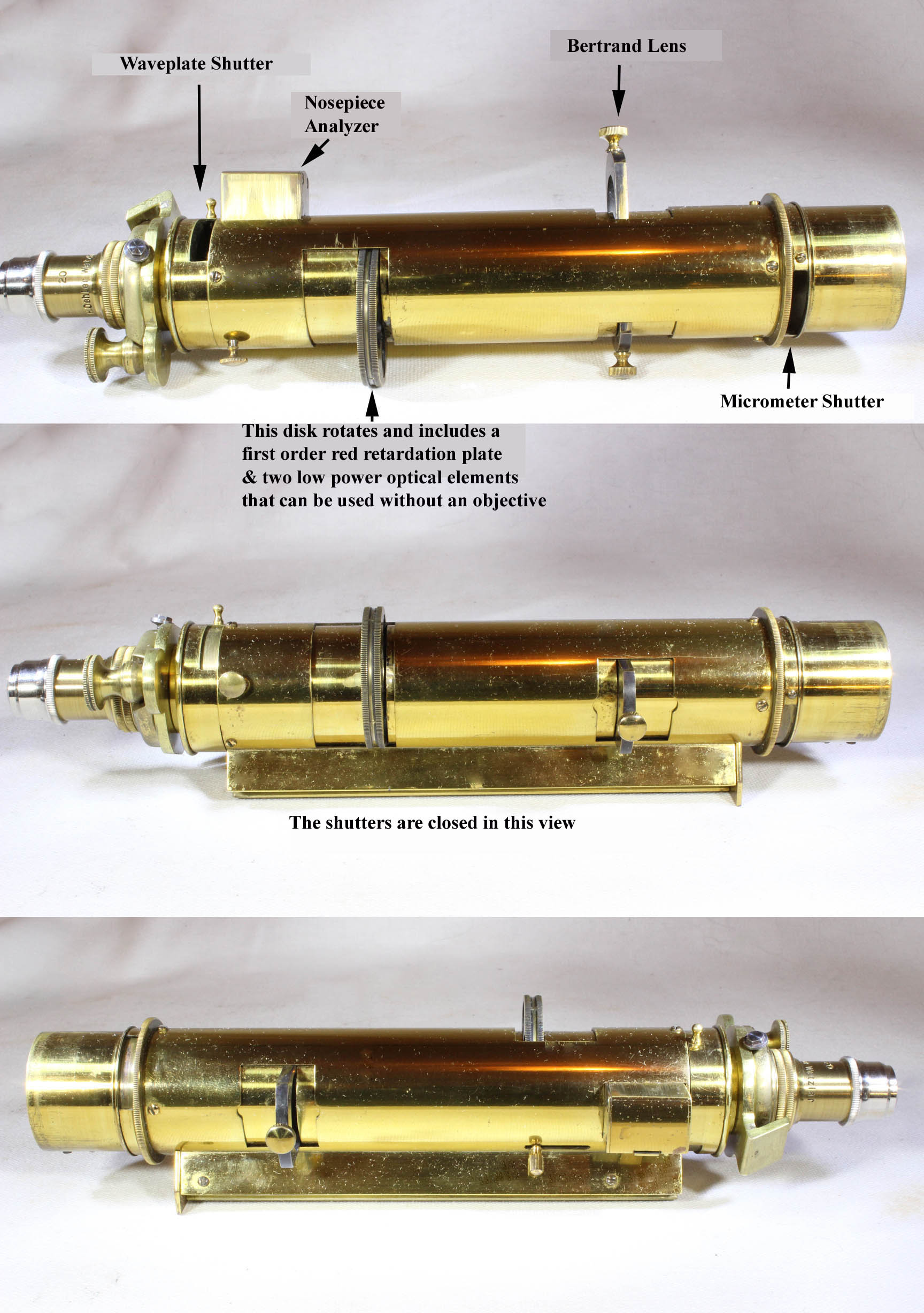 This special petrographic tube has a fixed tube length of about 7 1/2 inches (180 mm, one of the German standards). This tube is not listed nor pictured in any Watson catalog that I have seen. It also has a feature different from any other Watson microscope that I know of; this is a wheel of selenites above the nosepiece analyzer.
This special petrographic tube has a fixed tube length of about 7 1/2 inches (180 mm, one of the German standards). This tube is not listed nor pictured in any Watson catalog that I have seen. It also has a feature different from any other Watson microscope that I know of; this is a wheel of selenites above the nosepiece analyzer. 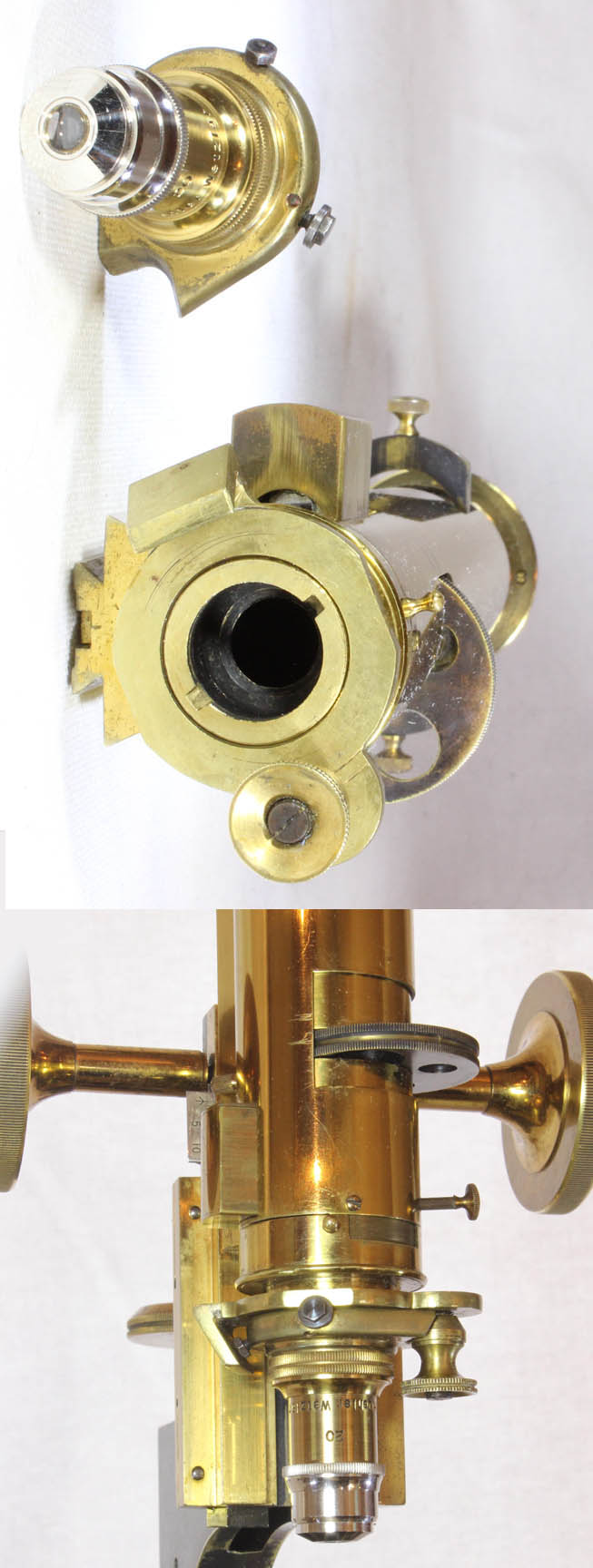 Attached to the end of the petrographic tube is the special fitting for the five centerable objective mounts carrying Oehler objectives; the knob securing the objectives screws tighter in the counterclockwise direction, and features a tapered bottom that fits into the curved tapered side of the objective mounts. Immediately above that is
a window slot for wave plates, or the calcite slider, with a shutter controlled by a tiny knob. Above the wave plate slot sits the nosepiece analyzer. The analyzer can be slid out of the optical axis, but its vertical position cannot be varied.
Attached to the end of the petrographic tube is the special fitting for the five centerable objective mounts carrying Oehler objectives; the knob securing the objectives screws tighter in the counterclockwise direction, and features a tapered bottom that fits into the curved tapered side of the objective mounts. Immediately above that is
a window slot for wave plates, or the calcite slider, with a shutter controlled by a tiny knob. Above the wave plate slot sits the nosepiece analyzer. The analyzer can be slid out of the optical axis, but its vertical position cannot be varied. 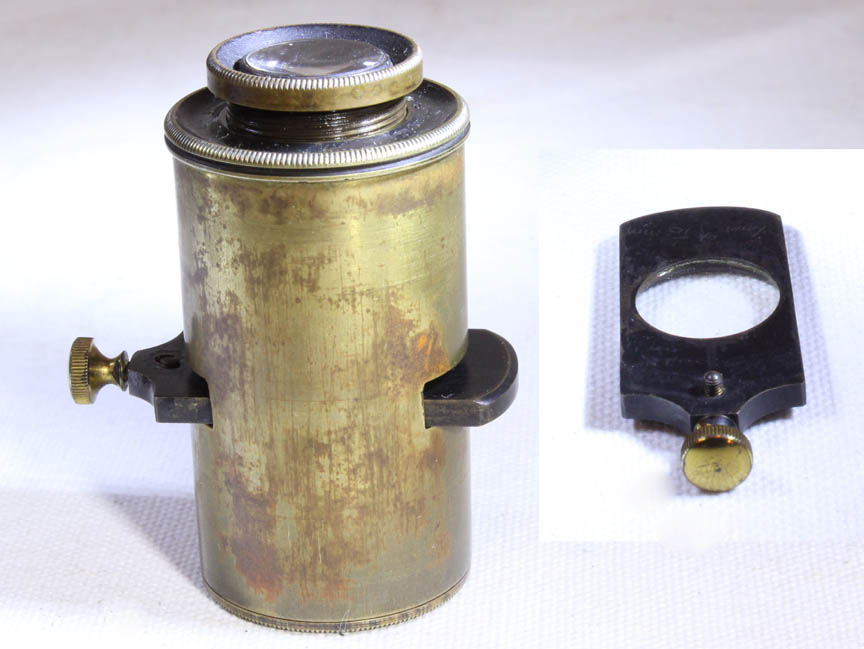 A special 'best large size' crossed web eyepiece fits the top of the petrographic tube. It has a slot to line up with a screw on the tube so it does not rotate. It also has a slot which matches the shutter in the tube which sits above and is controlled by, a knurled ring. The eyepiece micrometer fits into this slot. This eyepiece has a top element that can, via screwing it in or out, focus on the micrometer rulings.
A special 'best large size' crossed web eyepiece fits the top of the petrographic tube. It has a slot to line up with a screw on the tube so it does not rotate. It also has a slot which matches the shutter in the tube which sits above and is controlled by, a knurled ring. The eyepiece micrometer fits into this slot. This eyepiece has a top element that can, via screwing it in or out, focus on the micrometer rulings.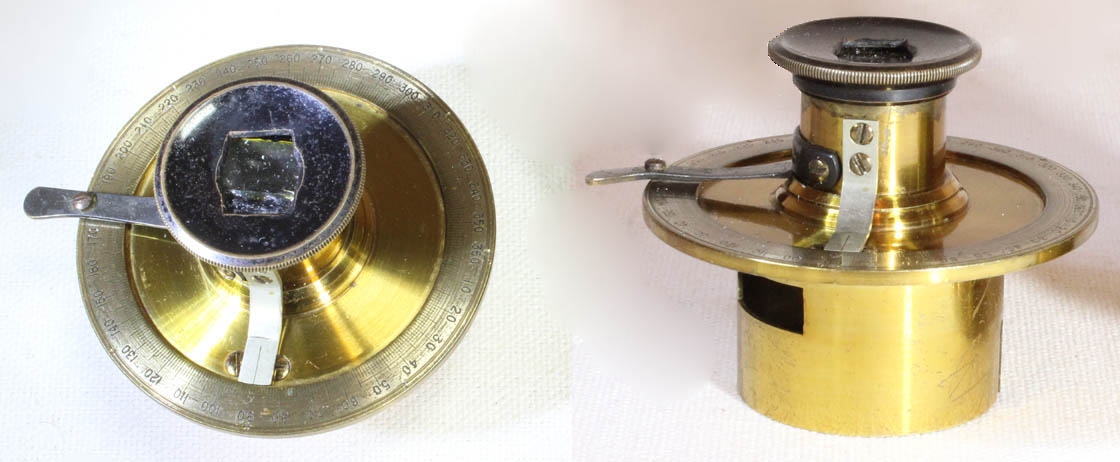 An eyepiece analyzer, fits on top of the outer optical tube and also has a registration slot and also has windows for the waveplate to sit above the eyepiece. This analyzer has a silvered scale engraved in single degrees, numbered every ten, and with click stops every forty five degrees. The wave plate, or calcite slider with this microscope, can also fit below the retractable analyzer in the nosepiece. This analyzer is designed to be used with the larger eyepiece pictured above
An eyepiece analyzer, fits on top of the outer optical tube and also has a registration slot and also has windows for the waveplate to sit above the eyepiece. This analyzer has a silvered scale engraved in single degrees, numbered every ten, and with click stops every forty five degrees. The wave plate, or calcite slider with this microscope, can also fit below the retractable analyzer in the nosepiece. This analyzer is designed to be used with the larger eyepiece pictured above 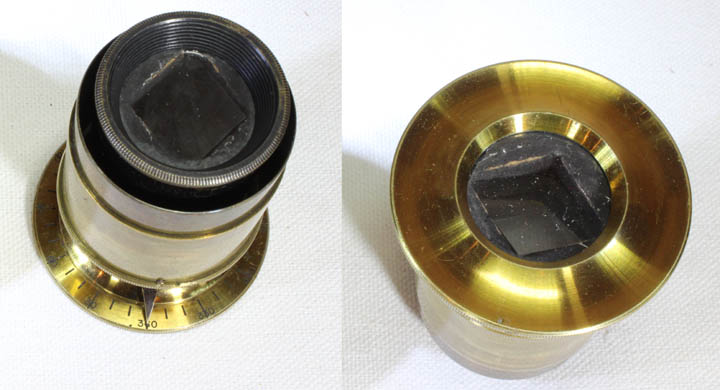
 The petrographic polarizer 'condenser' is also calibrated, can rotate in its housing and has stops every 45 degrees with a pointed indicator. This is the large size sold by Watson.
The petrographic polarizer 'condenser' is also calibrated, can rotate in its housing and has stops every 45 degrees with a pointed indicator. This is the large size sold by Watson.  Two sliders came with microscope for use with the petrographic tube. One is an eyepiece micrometer slider, which fits into the slot at the bottom of the cross-webbed eyepiece. The other is a calcite slider plate which could be placed in front of the goniometer prism analyzer or in front of the nosepiece analyzer. The calcite slider is used mainly to confirm exact extinction for crossed polars.
Two sliders came with microscope for use with the petrographic tube. One is an eyepiece micrometer slider, which fits into the slot at the bottom of the cross-webbed eyepiece. The other is a calcite slider plate which could be placed in front of the goniometer prism analyzer or in front of the nosepiece analyzer. The calcite slider is used mainly to confirm exact extinction for crossed polars.